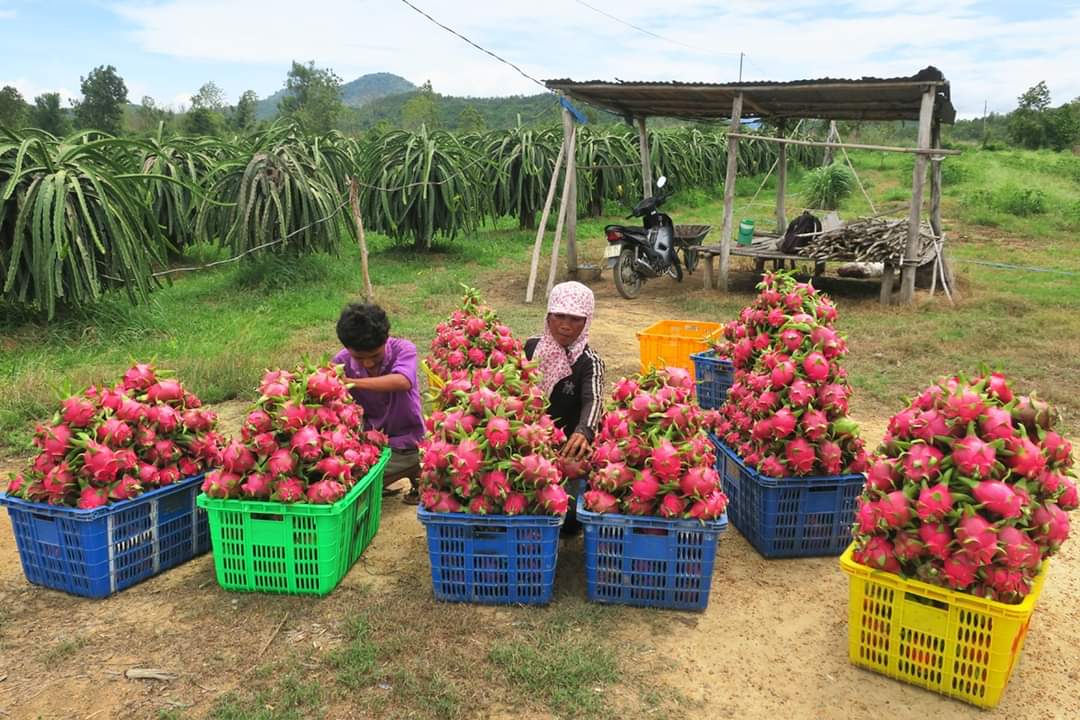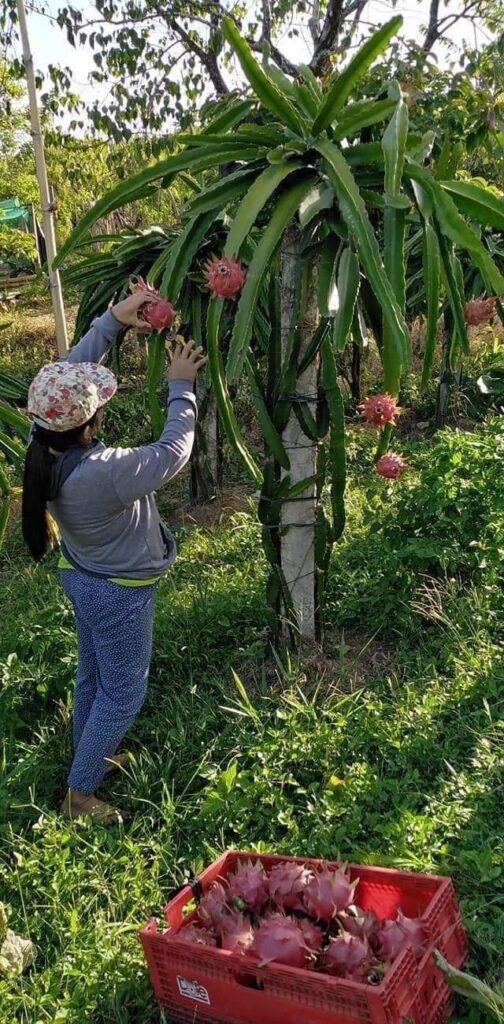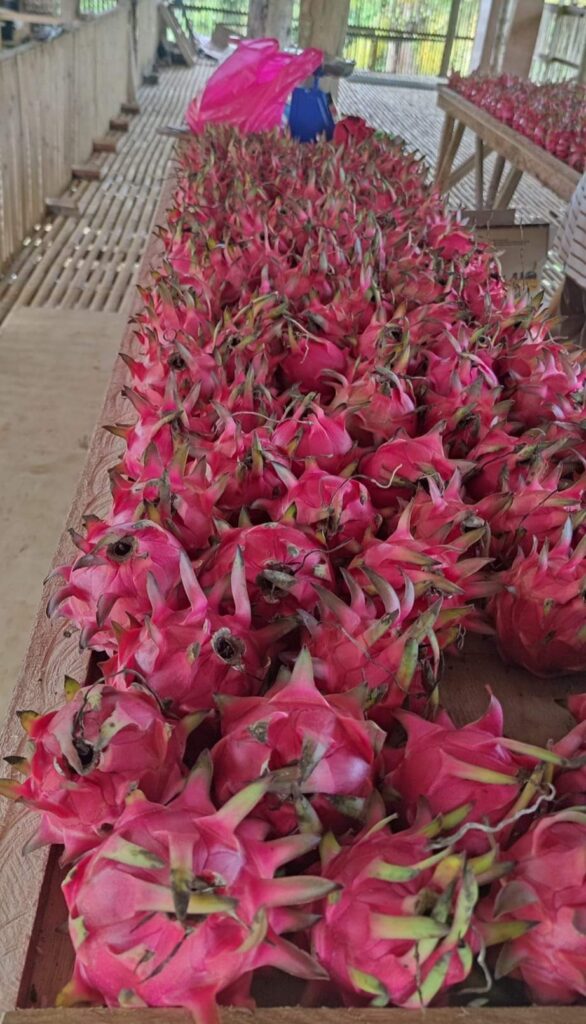Dragon Fruit Harvest and Storage

This post is also available in:
This post is also available in:
![]() Español (Spanish)
Español (Spanish) ![]() Français (French)
Français (French) ![]() Deutsch (German)
Deutsch (German) ![]() हिन्दी (Hindi)
हिन्दी (Hindi) ![]() العربية (Arabic)
العربية (Arabic) ![]() Türkçe (Turkish)
Türkçe (Turkish) ![]() 简体中文 (Chinese (Simplified))
简体中文 (Chinese (Simplified)) ![]() Português (Portuguese (Brazil))
Português (Portuguese (Brazil))
Dragon fruit yield
The pitaya plants can start producing fruits 12-15 months after planting. Depending on the variety, the environmental conditions and the cultivation practices applied, and plant’s age, a single post can produce from 20-35 kg. As a result, the average yield per hectare (depending on the planting distances as well), may vary from 16,000 to 27,000 kg (14275- 24090 lb per acre).

Time and Method of Dragon Fruit Harvest – When and How to Harvest Dragon fruits
Generally, in the Philippines, dragon fruit is harvested 28-32 days after flowering. If it is traded by a farm directly to the consumer (for fresh market), the dragon fruit is harvested 30 days after flowering when the scales are still green.
The Dragon Fruit plant starts producing fruit in late April or early May. The month of June and July is the peak season for fruiting. Harvest season ends in October or November and sometimes extends until December. Harvesting in the Philippines can be in 6-12 sessions or cycles per year.
Quality characteristics and maturity indices play a key role in determining the moment of harvesting. A typical index maturity is skin color change to almost completely red. Fruit maturity at harvest influences quality and self-life spam. Harvesting at the wrong time leads to unacceptable quality, a shorter storage life, and increased chilling susceptibility. (3)
Basic steps to harvest the fruit:
- Choose one fruit that has not ripened completely or turned pink in color (depending on the variety).
- When finding a suitable fruit cost near the top of the fruit to separate it from the stem, choose the bigger ones.
- Place the collected fruits in the crate and proceed to storage or packaging.
Postharvest Disorders of Dragon Fruits
- Chilling Injury – Fruits that are harvested early are more prone to chilling injury. This will occur at the temperature level of 5-6°C. These are characterized by flesh translucency, softening, wilting, darkening of scale, browning of the outer flesh, and poor flavor.
- Mechanical Injury – This occurs due to skin abrasion making the fruit unappealing and intensifying the rate of water loss resulting in shriveling.
- Moisture Loss – The fruit is vulnerable to moisture and physiological weight loss ranging from about 0.1% (5°C) to 2.6% (20°C). Appropriate packaging of fruit in performed plastic bags while maintaining required relative humidity. Water and moisture loss resulted in unsightly shriveling and a reduction in fruit weight.
- Decay

Storage and Shelf Life of Dragon Fruits
Storage at 10°C with 93% relative humidity (RH) is considered the optimum condition for storing harvested dragon fruits to maintain their quality. In these conditions, it will retain higher storage life of up to 15 to 17 days. If the temperature is too cold, it will soften and damage the Dragon Fruit. Similarly, when the storing temperature increases over the optimum levels, the spine goes yellow and loses its fresh appearance. Keep cool technology suitable for the fruit to maintain freshness; the quality is the main factor that the fruit can be shipped worldwide.
Dragon Fruit is a short shelf-life, non-climacteric fruit that can be easily destroyed by mold growth during storage. An investigative study about peppermint oil as an alternative method to inhibit surface wounding and prolong the shelf-life of dragon fruit during storage. In addition, essential oil vapor maintained a firm fruit, the green colour of the bract, titratable acid value, and total phenolic content after 21 days in comparison to the control.
References:
- https://dfnet.fftc.org.tw/
- https://dfnet.fftc.org.tw/
- https://krishi.icar.gov.in/
- https://www.sciencedirect.com/
Dragon Fruit: Crop History, Nutritional Value and Uses
Dragon Fruit Plant Information and Environmental Requirements
Dragon Fruit Variety Selection
Soil Requirement and Land Preparation for Dragon Fruit
Dragon Fruit Planting Distances and Trellising
Dragon Fruit Pollination and Propagation
Dragon Fruit tree Training and Pruning
Dragon Fruit Water Requirement and Irrigation Systems
Dragon Fruit Harvest and Storage


















